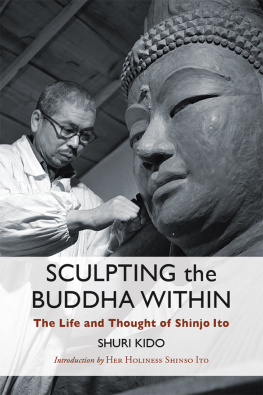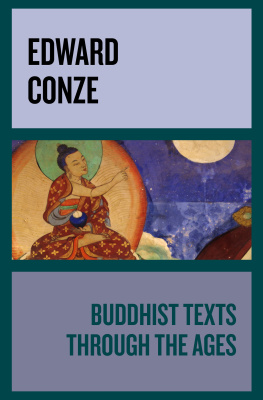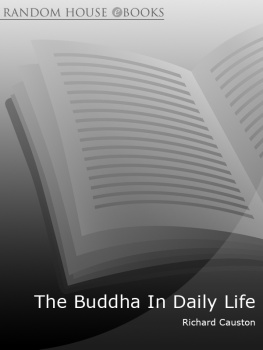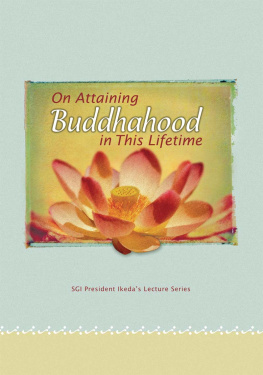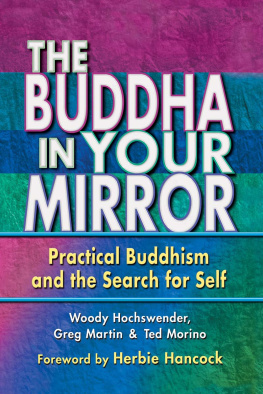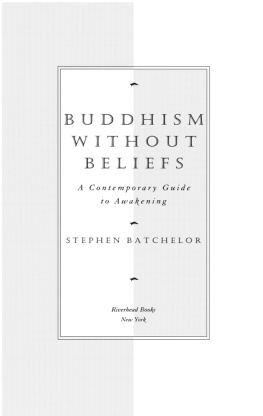
Sculpting the Buddha Within is the first major biography of Shinjo Ito, the founder of the Shinnyo-en tradition of Buddhism and one of the twentieth centurys most innovative spiritual teachers. Ito was schooled in Shingon, the millennium-old esoteric Buddhism of Japan, and used that as the basis for developing a unique lay practice grounded in the principles and concepts of the Mahayana version of the Nirvana Sutra.
Itos wish was to help his practitioners see their own potential for goodness so that they, too, would be inspired to work diligently to shape and give form to their inner buddha. Rather than encouraging his followers to believe in a fixed system of practice or beliefs, Ito taught how to live life in accordance with ones buddha nature and the gratitude, creativity, and happiness latent within it.
Sculpting the Buddha Within is a thorough account of the vibrant life and work of Shinjo Ito, the innovator behind the Japanese Buddhist school Shinnyo-en, which recasts ancient spiritual lineages to meet the needs of contemporary practitioners. Its also a story of regeneration and the courage to move forward with new paradigms in the modern era.
Helen Tworkov, founder, Tricycle: The Buddhist Review
A beautifully written book depicting Master Shinjo Itos unwavering mind of love.
Sister Chan Kinh Nghiem, Deer Park Monastery
Buddhism is given life in myriad ways by Shinjo Ito. The brilliant life and pioneering work of Shinnyo-ens founder is conveyed in a compelling and readable manner by Sculpting the Buddha Within.
Duncan Ryuken Williams, director, USC Shinso Ito Center for Japanese Religions and Culture
Wisdom Publications
199 Elm Street
Somerville, MA 02144 USA
wisdompubs.org
2019 Ichinyosha
All rights reserved.
No part of this book may be reproduced in any form or by any means, electronic or mechanical, including photography, recording, or by any information storage and retrieval system or technologies now known or later developed, without permission in writing from the publisher.
Library of Congress Cataloging-in-Publication Data
Names: Kido, Shuri, 1959 author.
Title: Sculpting the Buddha within: the life and thought of Shinjo Ito / Shuri Kido.
Identifiers: LCCN 2019000218 (print) | LCCN 2019011027 (ebook) | ISBN 9781614296300 (ebook) | ISBN 9781614296195 (pbk.: alk. paper)
Subjects: LCSH: Ito, Shinjo, 19061989. | Buddhists Japan Biography. | Buddhist priests Japan Biography. | Shinnyo-en Biography. | Acalanatha-Vidyaraja (Buddhist deity) Cult Japan. | Buddhist cults Japan History 20th century. | Buddhism Japan History 20th century.
Classification: LCC BQ964.T6 (ebook) | LCC BQ964.T6 K53 2019 (print) | DDC 294.3/92 [B] dc23
LC record available at https://lccn.loc.gov/2019000218
ISBN 978-1-61429-619-5 ebook ISBN 978-1-61429-630-0
23 22 21 20 19 5 4 3 2 1
Cover design by Jim Zaccaria. Interior design by Greta D. Sibley.
Creating a buddha image is not about sculpting the form.
It is said that all beings possess a buddha nature, and
I sculpt buddha images out of a wish to make each
individual a living buddha.
Shinjo Ito
Foreword
In Remembrance of Shinjo Ito
PRIOR TO HIS RETURN TO the eternal abode of all awakened ones, Shinnyo-ens founding Dharma master, Shinjo Ito, spent his entire life in the sacred pursuit of guiding as many people as possible onto a path of solace and well-being.
In my view, the existence of religion itself stems from our fundamental acknowledgment of forces that transcend the human condition, whether natural or what we call deities or buddhas. It is my understanding that Master Shinjo began his religious pursuits after having mastered a form of spiritual discernment known as the Byozeisho , a divinatory tradition handed down in his native land of Kai (present-day Yamanashi). I believe one of the purposes of Buddhism is to teach us to live in alignment with the forces of nature, within whose interwoven web all life thrives. So I was particularly impressed by Master Shinjos insight to first study the principles of our natural world before training in the Buddhadharma.
No matter how much we may ponder heaven, earth, the divine, or celestial bodies, though, the ultimate truths of the cosmos far exceed the scope of human understanding. Yet it is Buddhisms mission to pass on such wisdom to succeeding generations. I believe we can only do so by returning to its core truths without being fixated on minutiae.
Buddhism talks of the preciousness of transmitting the Buddhas teachings to impart the means to spiritual liberation, peace, and tranquility to those caught up in the complexities of our world. Saicho, the great founder of the Tendai tradition, taught of selfless devotion in service to others. I feel Master Shinjo faithful to the very essence of spiritual practice from the inception of his sangha also prioritized the genuine liberation and awakening of individuals over the growth of his community. His accomplishments speak to a spirit that was truly the same as the ultimate intentions of all the buddhas upon whose images we meditate and was in keeping with the path realized through their many protections.
I would like to convey my deepest respect for Master Shinjos efforts that have brought many people together. I am simultaneously filled with great sorrow that he did not live longer. I have no doubt he would still be working vigorously toward his goals were he still with us today.
I encourage each of you as his successors to unfailingly cherish, embody, and actively carry his legacy into the future for the spiritual liberation and awakening of humankind. This, I am convinced, is both the mission of his sangha and the greatest way to repay the kindness of your founding master.
Most Venerable Etai Yamada (18951994)
Former Head of Enryakuji Monastery, Mount Hiei, Japan
Tendai Buddhism
Preface
BUDDHISM IS UNDERSTOOD TO HAVE originated 2,500 years ago in India with the teachings of its founder, Siddhartha Gautama, also known as Buddha Shakyamuni. The religion evolved as it spread from the Indian subcontinent through Central, East, and Southeast Asia.
A basic tenet of the Buddhist teachings is that nothing is fixed or permanent and that change is natural. This is especially true when it comes to adapting the path of practice for different individuals or cultures. The Buddha himself was very accommodating of the needs of his disciples particularly those from different places or diverse groups in society and he allowed for adjustments to the way in which his teachings were presented. As a result, Buddhism became a tradition that adapted to the needs of the people it served, and over the course of twenty-five centuries numerous reformers have founded different schools and sects of Buddhism to meet such evolving needs.
This book is the story of one such person, Shinjo Ito (19061989). Shinjo was the founder of Shinnyo-en, a lay Buddhist order based on Shingon Buddhism. He was born in Yamanashi Prefecture in Japan. He started his career as an aeronautical engineer, but soon felt a strong calling to pursue Buddhism and dedicate himself to a religious life. He trained at Daigoji, a monastery of the Shingon sect of esoteric Buddhism in Kyoto, and became a great acharya a Dharma master authorized to establish a separate denomination if he chose to do so. In 1946, after wartime restrictions on religious orders were abolished, the spiritual community that Shinjo founded became officially independent of Shingon Buddhism. Shinjo named his new group Makoto Kyodan (Sangha of Truth) and established the community that would later come to be called Shinnyo-en.

